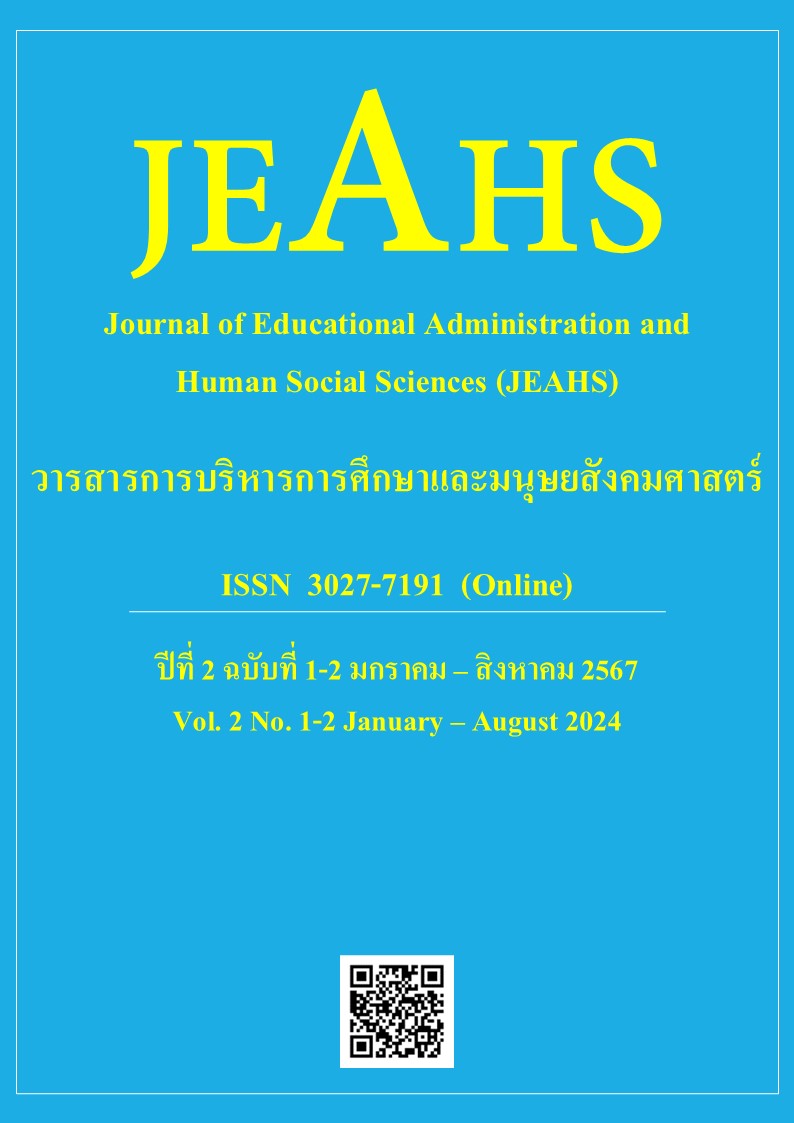SIX TEMPERAMENTS IN DAILY LIFE
Main Article Content
Abstract
The 6 Temperaments are a classification of people based on their basic character traits which the Buddha stated in the Tripitaka to provide a deeper understanding of the nature of the human mind and to apply it to self-development, including better understanding and living with others. There are 6 types of temperament: 1) Rāgacharita: emphasizing physical pleasure and enjoyment, liking beautiful things, and being infatuated with sensual pleasures. For example, Phra Nanda was infatuated with the beauty of young women, or Phra Khema Theri who was still attached to life in the palace. 2) Dosacharita: hot-tempered, easily angered, and easily irritated. For example, a glass craftsman who was so angry that he destroyed a Buddha image. 3) Mohacharita: lazy, lethargic, and not thinking much, often misled. For example, people in the Thandaki forest, a forest of suffering, but did not try to find a way out. 4) Vitakkacharita: worrying too much, thinking too much, and worrying about various things. For example, the Nakkhatta Jataka: worrying about rebirth. 5) Saddhacharita: believing things easily, not asking questions or considering reasons. For example, Phra Vakkali Thera. Who believe in the teachings of teachers without considering. 6) Buddhicharita, clever, intelligence, like to think analytically, have reason. For example, many disciples such as Phra Sariputta, Phramaha Kassapa.
The 6 temperaments are a concept that helps us understand human nature deeply. Knowing the temperament of ourselves and others will help us develop ourselves and build better relationships with others. In addition, the 6 temperaments are very important in life, including: 1) Understanding ourselves, helping us understand the nature of our own minds and being able to develop ourselves appropriately; 2) Understanding others, helping us understand the behavior of others better, allowing us to live happily with others; 3) Selecting appropriate teaching methods, teachers can select teaching methods that are appropriate for the learners' temperaments, and 4) Solving problems, helping us to solve problems caused by our own temperaments.
Article Details

This work is licensed under a Creative Commons Attribution-NonCommercial-NoDerivatives 4.0 International License.
บทความที่ส่งมาขอรับการตีพิมพ์ในวารสารวารสารการบริหารการศึกษาและมนุษยสังคมศาสตร์ จะต้องไม่เคยตีพิมพ์หรืออยู่ระหว่างการพิจารณาจากผู้ทรงคุณวุฒิเพื่อตีพิมพ์ในวารสารอื่น รวมทั้งผู้เขียนจะต้องคำนึงถึงจริยธรรมการวิจัย ไม่ละเมิดหรือคัดลอกผลงานของผู้อื่นมาเป็นของตนเอง ซึ่งทางวารสารได้กำหนดความซ้ำของผลงานด้วยโปรแกรม CopyCat เว็บ Thaijo ในระดับ ไม่เกิน 25%
ในกรณีที่ บทความวิจัยมีกระบวนการวิจัยเกี่ยวข้องกับมนุษย์ ผู้นิพนธ์จะต้องส่งหลักฐานการรับรองจริยธรรมการวิจัยในมนุษย์มาประกอบการลงตีพิมพ์ด้วยจึงจะได้รับการพิจารณาลงตีพิมพ์ในวารสาร
ผู้เขียนบทความจะต้องปฏิบัติตามหลักเกณฑ์การเสนอบทความเพื่อตีพิมพ์ในวารสารการบริหารการศึกษาและมนุษยสังคมศาสตร์ รวมทั้งระบบการอ้างอิงต้องเป็นไปตามหลักเกณฑ์ของวารสารการบริหารการศึกษาและมนุษยสังคมศาสตร์ โดยรวมทั้งทัศนะและความคิดเห็นที่ปรากฏในบทความในวารสารการบริหารการศึกษาและมนุษยสังคมศาสตร์ ถือเป็นความรับผิดชอบของผู้เขียนบทความนั้น และไม่ถือเป็นทัศนะและความรับผิดชอบของกองบรรณาธิการวารสารการบริหารการศึกษาและมนุษยสังคมศาสตร์ และวารสารการบริหารการศึกษาและมนุษยสังคมศาสตร์
References
กระจ่าง อัฐนาค. (2550). พฤติกรรมที่ไม่พึงประสงค์ของนักเรียนมัธยมศึกษาตอนต้น ในสถานศึกษาสังกัดสำนักงานเขตพื้นที่การศึกษากาฬสินธุ์ เขต 3. วิทยานิพนธ์ครุศาสตรมหาบัณฑิต. มหาวิทยาลัยราชภัฏสกลนคร.
พระอุปติสสเถระ. (2547). วิมุตติมรรค. แปลโดย พระเทพโสภณ (ประยูร ธมฺมจิตฺโต) และคณะ. พิมพ์ครั้งที่ 6. กรุงเทพมหานคร: โรงพิมพ์มหาจุฬาลงกรณราชวิทยาลัย.
มหาจุฬาลงกรณราชวิทยาลัย. (2539). พระไตรปิฎกภาษาไทย ฉบับมหาจุฬาลงกรณราชวิทยาลัย.กรุงเทพมหานคร: โรงพิมพ์มหาจุฬาลงกรณราชวิทยาลัย.
มหาวิทยาลัยราชภัฏวไลยอลงกรณ์ ในพระบรมราชูปถัมภ์. (2553). คู่มือการจัดระบบการเรียนการสอนที่ยึดผู้เรียนเป็นศูนย์กลางการเรียนรู้. พระนครศรีอยุธยา: เทียนวัฒนา พริ้นท์ติ้ง.
สงวน สุทธิเลิศอรุณ. (2543). พฤติกรรมมนุษย์กับการพัฒนาตน. กรุงเทพมหานคร: อักษราพิพัฒน์.
สานิตย์ หนูนิล และกนกวรา พวงประยงค์. (2562). ปัจจัยที่มีผลต่อรูปแบบการดำเนินชีวิตของคนรุ่นใหม่ในชนบทไทย. วารสารพัฒนาสังคม. 21(2). 176-193.
Evans, M., Jamal, A. & Foxall, G. (2009). Customer behavior. 2nd ed. Chichester: John Winley & Sons.
Hawkins, D. I. & Mothersbaugh, D. L. (2013). Customer behavior: building marketing strategy. 12th ed. New York: McGraw-Hill Irwin.
Hoyer, W. D. & MacInnin, D., J. (2010). Customer behavior. 5th ed. Manson, Ohio: SouthWestern Cengage Learning.


